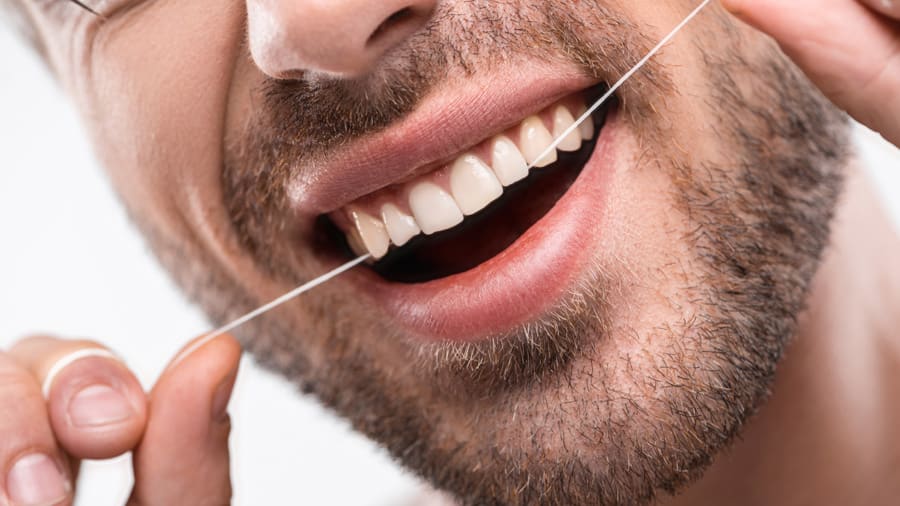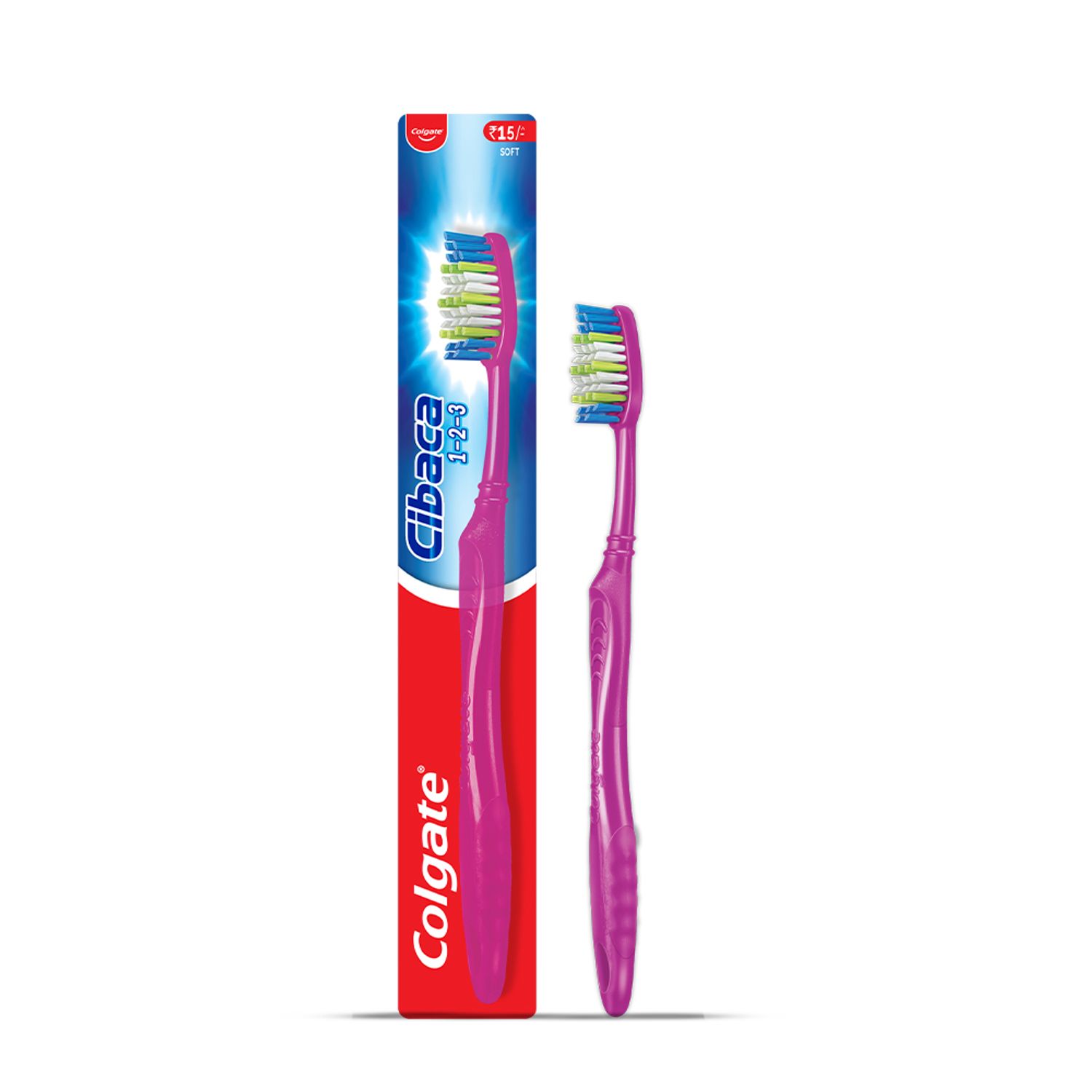Importance of Interdental Cleaning For Oral Health
While flossing once and brushing twice daily are essential for dental health, some may presume the latter alone is sufficient. The Indian Dental Association (IDA) notes that brushing does only 60% of cleaning of the teeth surfaces. Plaque (the colourless biofilm of food particles and bacteria) easily builds up between the teeth and along the gumline. In the absence of flossing, these hidden plaque deposits can cause various implications, including:
Untreated plaque hardens to tartar, which does not go away by brushing and flossing.
Plaque bacteria irritate the gums, causing gum inflammation and gingivitis (an early stage of gum disease).
If not cleaned, plaque and tartar can worsen gingivitis. It can progress into advanced periodontal disease, which leads to tooth loss.
Untreated plaque causes bad breath, tooth decay, and cavities.
Flossing or interdental cleaning removes plaque between the teeth and along the gumline. It helps keep your gums and teeth clean and healthy and helps prevent oral problems. Some individuals use dental floss for interdental plaque removal, while others consider interdental brushes and water flossers cosy alternatives.
Dental Floss: Benefits And Proper Technique
Dental floss is a bundle of thin and flexible string, usually made of nylon, Teflon, or silk. It is used to clean the interdental spaces and along the gum line, where the toothbrush has limited access. Typically, traditional floss is used by winding it around the fingers and sliding it between the teeth. It is then moved up and down along the sides of each tooth, closer to the gums.
Flossing removes food particles and plaque trapped in these tight spaces, helping prevent cavities, bad breath, and gum diseases. Different types of floss are available across stores, showcasing features that suit diverse oral care needs. You may find flavoured versions that make the flossing experience more refreshing. Eco-friendly options made of bio-degradable materials, like corn-based fibre, offer a sustainable option. The common types of floss include:
Waxed floss: It has a layer of wax coating that lets it slide easily between teeth and prevents it from shredding easily.
Unwaxed floss: Less slippery than waxed floss, it offers a better grip for some individuals. However, it is more susceptible to shredding and challenging to use with closely spaced teeth.
Dental tape: Wider and flatter than regular floss, it covers a larger surface area. It comes in waxed and unwaxed versions and is preferred by those with wider spaces between teeth.
Super floss: It has a stiff end for threading, a spongy middle to clean larger areas, and regular floss for normal spaces. People with dental bridges, braces, or wider interdental gaps find it useful.
Floss picks: These are small plastic tools with a bit of floss stretched across a handle. They offer a cosy option to clean between the teeth, especially the back teeth.
While evaluating interdental brush vs floss, it is worth noting that floss is a time-tested tool. Meanwhile, consider using a toothbrush that offers a gentle yet effective cleanse for your teeth and gums. For instance, try the Colgate Gentle UltraFoam Toothbrush. Its ultra-soft bristles are designed to clean the teeth and massage the gums gently. Its Belgium Bristle Technology offers denser foam and powerful cleansing over regular toothbrushes to resist plaque buildup and gum problems.
Benefits of Dental Floss
Regular flossing is just as significant as regular brushing. Knowing the benefits of dental floss encourages good oral hygiene habits in kids and adults alike. It promotes dental hygiene and helps avoid potential oral problems. This is particularly helpful for those wearing dental appliances like braces. The advantages of using dental floss regularly include:
Plaque removal: Floss removes plaque from difficult areas which your toothbrush may miss easily.
Prevention of gum disease: Regular flossing for plaque removal helps prevent gum infection and gum disease.
Lower risk of cavities: Cleaning between the teeth regularly reduces the risks of tooth decay and cavities in these areas.
Reduction of bad breath: Flossing to clear out food particles and plaque between teeth helps reduce oral malodor, leaving the mouth clean and fresh.
Portability: Floss is a lightweight tool that is portable and travel-friendly.
- Single-size solution: An important aspect of interdental brush vs floss is that floss works regardless of the spacing between teeth, making it suitable for most individuals.
Proper Technique
Dentistry recommends flossing once daily, ideally before brushing your teeth. You may choose a floss type based on your preferences and unique oral needs. Consider the following steps to use traditional floss to make the most out of it:
Cut about 18 inches of the floss. Wind it around each middle finger and leave about an inch or two to work with.
Hold the floss between your thumb and index fingers and pull tightly. Slide the floss gently between the teeth, starting with the back teeth, and work your way forward.
Curve the floss gently around the tooth’s base, going beneath the gumline. Avoid snapping or forcing the floss to prevent gum injuries and bleeding.
Make a ‘C’ shape with the floss around the tooth and slide it up and down to clean it. Repeat the procedure on the opposite tooth using a new section of floss.
Use clean sections of floss as you move from one tooth to another.
Remove the floss with the back-and-forth motion, bringing it up and away from the teeth. Discard the floss once you are done.
Interdental Brushes: Benefits And Proper Technique
Interdental brushes are special, small brushes designed to clean tougher areas between the teeth. They are usually thin, round, or cone-shaped and have a small head with bristles held on by wire. Some have a short or specially shaped handle for an easy grip, while others have long handles like regular toothbrushes. They are designed to be inserted gently between the teeth to remove food debris and plaque.
These brushes come in different sizes to suit different gaps. You may choose one that comfortably fits between your teeth. These brushes can be reused and rinsed just like a normal toothbrush after cleaning between each tooth. You may replace them when the bristles fray or the wire bends. The IDA notes two main types of these brushes:
Spiral wound brush: It features bristles wrapped around a thin wire. It can be gently passed between the teeth to clean the gaps. The brush should be ideally used from the inner and outer sides of the teeth to meet maximum efficiency.
Tufted interspace brush: It consists of a small brush with closely packed, short bristles that effectively clean specific areas like orthodontic brackets, dental implants, and difficult spots near the gum line.
Benefits of Interdental Brushes
Interdental brushes offer several benefits that make them a valuable inclusion in your daily oral care routine. They are a cosy alternative for individuals having discomfort or difficulty with string flossing or those with limited mobility. These brushes support oral hygiene for those with braces, bridges, dentures, or wider interdental gaps. In the context of interdental brush vs floss, these brushes offer ease of use, suit teeth with broader gaps, and require less skill. The main advantages of interdental toothbrushes include:
Effective plaque removal: Unlike regular toothbrushes, interdental toothbrushes reach deep into the gaps between the teeth and clean them effectively.
Prevents oral problems: With better cleaning efficiency, these toothbrushes prevent potential oral issues like cavities and gum diseases caused by plaque buildup.
Suitable for dental work: These brushes are an ideal choice to clean around orthodontic brackets, implants, dental bridges, and crowns, which may be difficult to achieve with traditional floss.
Easy to use: Unlike interdental floss, these brushes do not require dexterity, which makes them convenient for those with difficulty flossing or limited mobility.
Reusable: Interdental brushes are reusable, unlike traditional floss. Some offer replaceable heads and eco-friendly designs, providing a sustainable option over disposable floss.
Multiple sizes: These brushes are available in different sizes and shapes to suit different gaps between teeth, ensuring a more tailored fit for efficient cleaning.
Proper Technique
Including an interdental toothbrush in your dental care routine helps you maintain optimal oral hygiene and resist various dental problems. Choosing the right type of brush that suits your oral conditions and needs is crucial. You may consult a dental professional for the best recommendations. Ideally, interdental cleaning should precede regular brushing using toothpaste. Here are some steps to consider:
Insert the brush gently into the space between your teeth. You may hold the brush at an angle for easier access to the back teeth.
Slide the brush gently, letting the bristles work. Avoid twisting or forcing the brush, as it might damage your gums.
Gently move the brush back and forth multiple times to remove food debris and plaque.
Clean all the interdental spaces thoroughly.
Rinse the brush thoroughly with water. Replace the brush if the bristles start wearing away.
Interdental Brush vs Dental Floss: What's Best for You?
While both a floss and an interdental toothbrush are meant for interdental cleaning, choosing what is best for you depends on various factors. In this context, evaluating interdental brush vs floss is vital. Your dental hygienist can guide you with the right recommendations. The following factors can help you make a mindful choice:
Personal preference: Choosing the tool for interdental cleaning may greatly depend on one’s preferences.
Size of the interdental space: Traditional floss is ideal for closely spaced teeth, while an interdental toothbrush suits teeth with larger gaps.
Dexterity: Some people may have limited mobility or difficulty using a traditional floss. Interdental toothbrushes offer a cosy alternative for these people.
Dental work: Interdental toothbrushes are a better alternative to floss to clean teeth with dental work like braces or implants.
To conclude, interdental cleaning or flossing is an inevitable part of good oral hygiene. Both interdental toothbrushes and floss have unique benefits that cater to different dental care needs. While traditional floss is a time-tested tool, interdental toothbrushes offer convenience for specific cases. Distinguishing interdental brush and floss and considering your unique oral needs is vital to help you carefully choose your oral care staple for a healthy mouth.
Frequently Asked Questions
1. Are interdental brushes easier to use than floss?
The comfort of using an interdental brush or floss greatly depends on one’s oral needs. Interdental toothbrushes are a comfortable option for people with dental work, such as braces, and those who have limitations on movement or struggle to floss. These brushes are usually easy to use and require less dexterity, unlike traditional floss.
2. Which is more effective at removing plaque?
Both interdental toothbrushes and floss are effective at removing plaque from between the teeth. However, the effectiveness depends on the oral condition. Interdental brushes help clean teeth with larger gaps and dental appliances, whereas traditional floss suffices to clean tightly spaced teeth.
3. How often should I use interdental brushes or floss?
Dentistry recommends cleaning between teeth using a floss or interdental brush once daily. Regular flossing is essential for optimal oral hygiene as it removes plaque and food particles in between the teeth and along the gumline that your toothbrush may miss. Left to be, the plaque can build up and harden, leading to various oral problems.
4. Are there any specific techniques for using interdental brushes or floss?
Yes, there are specific ways of using an interdental brush or floss. An interdental toothbrush is gently inserted into the space between your teeth, and it is tilted to an angle to clean back teeth. The brush is rinsed with water after use. A piece of traditional floss, about 18 inches, is used by winding it around the fingers and sliding it gently between the teeth. It is curved around each tooth and moved up and down to clean the teeth and the gumline. The used floss is then disposed of.
This article is intended to promote understanding of and knowledge about general oral health topics. It is not intended to be a substitute for professional advice, diagnosis or treatment. Always seek the advice of your dentist or other qualified healthcare provider with any questions you may have regarding a medical condition or treatment.
ORAL HEALTH QUIZ
What's behind your smile?
Take our Oral Health assessment to get the most from your oral care routine
ORAL HEALTH QUIZ
What's behind your smile?
Take our Oral Health assessment to get the most from your oral care routine













